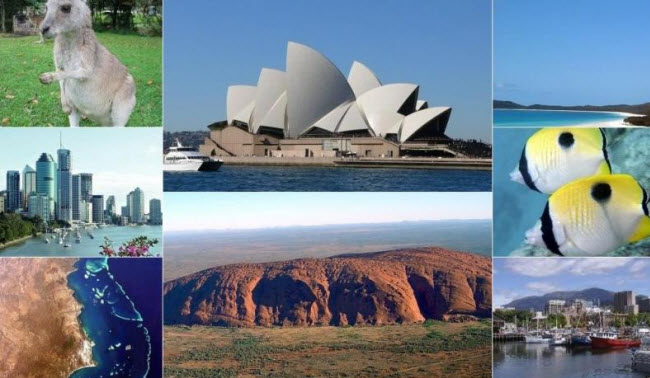Oceania is a geographical and geopolitical region comprising numerous countries and territories, most of which are islands scattered across the Pacific Ocean. It is the smallest continent in terms of land area, covering a minuscule fraction of Earth’s total landmass. Situated within the Southern and Eastern Hemispheres, Oceania is sometimes informally referred to as the “Australian Continent” due to Australia being the most developed country in the region. However, the accurate designation is Oceania, as it encompasses not only the main island nation but also various other islands representing independent nations and territories, including Fiji, East Timor, Vanuatu, the Solomon Islands, and Papua New Guinea. This diverse region, characterized by its extensive cultural and linguistic variety, is distinguished from other continents by its reliance on oceanic rather than land connections between its countries.
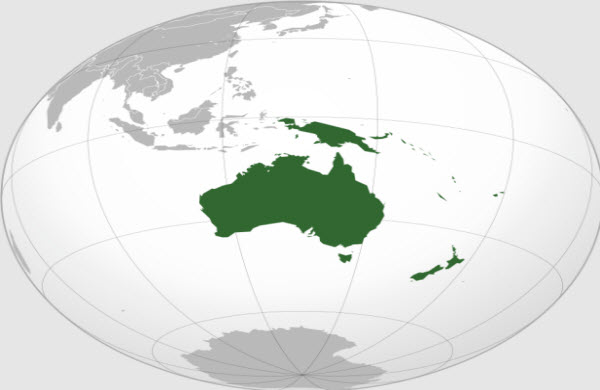
The total area of Oceania is approximately 8.6 million square kilometers. Australia is the largest country in the region by land area, covering 7.7 million square kilometers, followed by Papua New Guinea, New Zealand, and the Solomon Islands. The smallest countries in Oceania are Nauru, Tuvalu, the Marshall Islands, and Palau.
Countries and territories in Oceania vary in their levels of independence from colonial powers, with each negotiating a range of constitutional arrangements to fit their unique circumstances. These include:
Australia and Surrounding Territories:
- Australia – A Commonwealth nation.
- Norfolk Island – An external territory of Australia.
Melanesia:
- East Timor – A Republic.
- Fiji – A Republic.
- New Caledonia – A French territory.
- Papua New Guinea – A Commonwealth nation.
- Solomon Islands – A Commonwealth realm.
- Vanuatu – A Republic.
Micronesia:
- Guam – An organized, unincorporated territory of the United States.
- Kiribati – A Republic.
- Marshall Islands – A Republic in free association with the United States.
- Federated States of Micronesia – A Republic in free association with the United States.
- Nauru – A Republic.
- Northern Mariana Islands – A Commonwealth in political union with the United States.
- Palau – A Republic in free association with the United States.
- Wake Island – An unorganized, unincorporated territory of the United States.
Polynesia:
- American Samoa – An unorganized, unincorporated territory of the United States.
- Cook Islands – A self-governing territory in free association with New Zealand.
- French Polynesia – An overseas collectivity of France.
- Niue – A self-governing territory in free association with New Zealand.
- New Zealand – A Commonwealth realm.
- Pitcairn Islands – An overseas territory of the United Kingdom.
- Samoa – A constitutional monarchy.
- Tokelau – A territory with self-government.
- Tonga – An absolute monarchy.
- Tuvalu – A Commonwealth realm.
- Wallis and Futuna – An overseas collectivity of France.
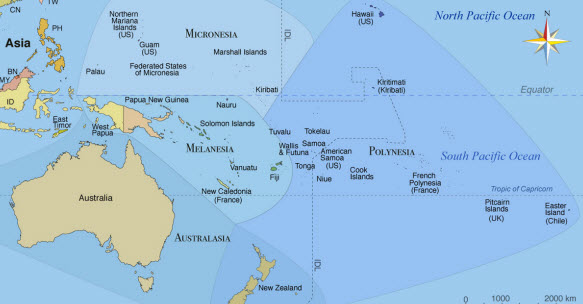
Geography of Oceania:
Oceania, as part of the Indo-Australian Plate, is characterized by its minimal landmass and considerable flatness, making it one of the oldest and most geologically stable regions. New Zealand, however, is part of the separate submerged continent of Zealandia. The region features a continental shelf divided by shallow seas into various landmasses, including the Arafura Sea and Torres Strait between mainland Australia and New Guinea, and the Bass Strait between mainland Australia and Tasmania. Due to its central position on its tectonic plate, Oceania has no active volcanic regions, distinguishing it as the only continent without such volcanic activity.

Climate:
In Papua New Guinea, the climate is predominantly seasonal, with monsoon winds from the southeast occurring from May to October, and temperatures averaging around 27°C year-round, with cooler lows nearing 11°C. Papua New Guinea’s highlands are among the few equatorial regions experiencing snowfall in higher elevations, with some areas receiving significant rainfall. In Australia, the climate is mostly arid or semi-arid, with temperate conditions along southern coastal regions. The northern parts of Australia enjoy a tropical climate, and snow is common in the highlands near the eastern coast, particularly in Victoria, New South Wales, Tasmania, and the Australian Capital Territory. Australian temperatures vary widely from 50°C to below freezing. Oceania is among the continents most affected by droughts and periods of high humidity.
Flora and Fauna:
Oceania hosts a diverse array of native wildlife, largely due to its long-term geographical isolation, tectonic stability, and unique climatic patterns affecting soil and vegetation. The continent is home to around 800 bird species, 45% of which are endemic to Australia. Notable Australian species include the koala, the Tasmanian devil, the emu, the kangaroo, and the goanna.
Historical Context:
The indigenous Australians who migrated to Oceania from Africa through Asia around 70,000 years ago are believed to have arrived on the continent at least 50,000 years ago. Recent archaeological evidence suggests an earlier arrival, possibly 65,000 years ago. There is also evidence of genetic and linguistic exchange between northern Australians and Austronesian peoples in New Guinea and the surrounding islands due to trade and intermarriage. It is estimated that the ancestors of the Papuan people lived in New Guinea between 42,000 and 48,000 years ago, with trade with neighboring Indonesian islands documented as early as the 7th century.
During the Greek civilization, the ancient philosopher Aristotle speculated about a large landmass in the Southern Hemisphere, a notion later expanded by Ptolemy, who believed that northern lands must be balanced by southern territories. The theory of land balance was mapped by Macrobius in the 5th century using the term “Australasia.”
In 1606, Dutch navigator Willem Janszoon made the first documented European landing in Oceania on the Cape York Peninsula. Dutch explorer Abel Tasman sailed to parts of the Australian continental coast and discovered Tasmania, New Zealand, and Fiji in 1642, becoming the first known European to reach these islands. In April 1770, British explorer James Cook and his crew made the first European landing on the Australian mainland at what is now called Cape York Peninsula, where Cook made initial contact with the indigenous Gweagal people. Captain Arthur Phillip later led the First Fleet of 11 ships and approximately 850 convicts to Sydney in January 1788, marking the beginning of European settlement in Oceania.
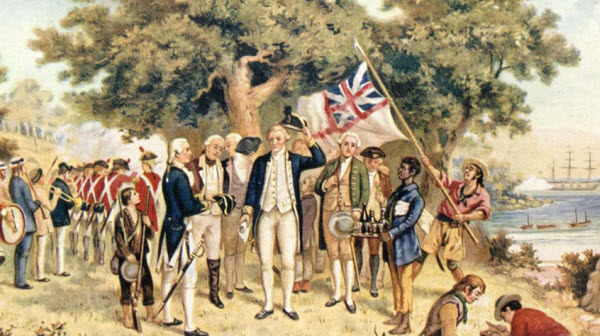
In the early 20th century, the Commonwealth of Australia was established when Governor-General Lord Hopetoun proclaimed the federal constitution in January 1901, leading to the creation of a new national government. In 1884, the southern coast of New Guinea and its adjacent islands were declared a British protectorate, with British New Guinea annexed directly in 1888. Australia fought alongside Britain in World War I and World War II, becoming a long-term ally of the United States. In February 1942, Japan’s bombing of Darwin, the largest single attack on Australia by a foreign power, was thwarted by Australian and Allied forces. The battles in Papua New Guinea from 1943-44 were the largest series of connected operations conducted by the Australian military throughout the war. In recent decades, trade with Asia has increased, and post-war immigration programs have welcomed over 6.5 million migrants, raising the population to over 26.1 million by 2022. Australia gained full independence from the United Kingdom in March 1986.
Demographics
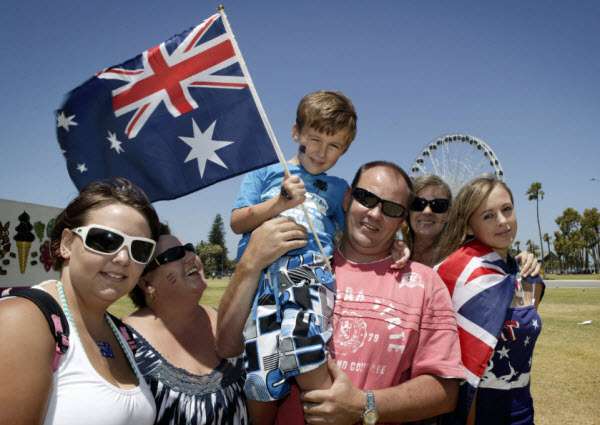
Oceania’s population is estimated at 39.4 million, representing 0.54% of the global population of 7.1 billion, making it the sixth most populous continent after Asia, Africa, Europe, North America, and South America. Australia has the largest population (26.1 million), followed by Papua New Guinea (10.1 million), New Zealand (5.2 million), and Fiji (929,800). The least populous countries in Oceania are Tokelau (1,871), Niue (1,934), Tuvalu (11,300), and Wallis and Futuna (11,600).
Christianity is the predominant religion in Oceania, although a significant number of Australians identify as non-religious. Other religions in the region include Islam, Buddhism, and Hinduism, which are prominent minority religions. In Papua New Guinea, Islam is prevalent in the Indonesian part, while many Papuans combine Christian beliefs with traditional indigenous practices.
Languages spoken in Oceania include English in Australia, Tok Pisin in Papua New Guinea, and Indonesian (Malay) in Indonesian New Guinea. Migration to Australia has introduced foreign languages such as Italian, Greek, Arabic, Filipino, Mandarin, Vietnamese, Spanish, and others. Papua New Guinea has the highest number of indigenous languages, with 820 languages representing 12% of the global total, although most have fewer than 1,000 speakers.
